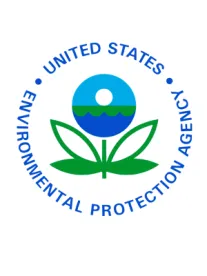On December 18, 2019, the Office of Pesticide Programs (OPP) of the U.S. Environmental Protection Agency (EPA) issued for comment a Proposed Interim Decision (PID) in the ongoing registration review process for each of the three registered triazine herbicides: atrazine, propazine, and simazine. EPA will allow 60 days for comment on each of these triazine PIDs, but the specific comment deadline will only be established after EPA has published notice concerning the proposed interim decisions in the Federal Register. EPA can utilize an “interim registration review decision” under 40 C.F.R. Section 155.56 whenever it is not yet ready to complete the registration review process, but EPA has nonetheless completed sufficient review to determine that new or interim risk mitigation measures are needed or that additional data or information should be submitted to complete the review. For each of the three triazine herbicides, EPA is proposing to impose specific risk mitigation measures for particular registered uses to mitigate potential health and environmental risks. For each triazine herbicide, EPA is not yet ready to make a final registration review decision because EPA has not made findings in the Endocrine Disruptor Screening Program (EDSP) or an effects determination under the Endangered Species Act (ESA). Several key factors that will affect the final registration review decision for each of the triazine herbicides are discussed below.
Common Factors for Triazine Risk Assessment
There are several common factors to consider with regard to the triazines risk assessment. These include:
- Atrazine, propazine, and simazine are all included in the chlorotriazine chemical class. EPA has determined that these three herbicides, along with three specific chlorinated metabolites, share a common mechanism of toxicity, so human health risks from all of these substances are being assessed by EPA together through one cumulative triazine risk assessment. The contribution of each product to aggregate human risk differs because of somewhat dissimilar use patterns. The combining of risks resulting from use of each triazine means, however, that it may be necessary for EPA to coordinate the ultimate registration review decisions for the three active ingredients.
- As part of the ecological risk assessment for each triazine herbicide, EPA plans to make an effects determination for potentially vulnerable species under the ESA, which in turn will determine whether it is necessary for EPA to consult with the Fish and Wildlife Service or the National Marine Fisheries Service (the Services) concerning potential impacts of each active ingredient and relevant metabolites on endangered or threatened species. Atrazine, propazine, and simazine are all included in a stipulated settlement between the parties in Center for Biological Diversity et al. v. EPA et al. No. 3:11 cv 0293 (N.D. Cal.), and EPA agreed in that stipulated settlement to set August 14, 2021, as the deadline for EPA to make a nationwide effects determination for each active ingredient, and to request any required consultation with the Services, under ESA Section 7(a)(2).
- EPA states that the predominant human health effect of concern for all three of the triazine herbicides and their chlorinated metabolites is potential suppression of the luteinizing hormone (LH) surge, which is considered to be both a neuroendocrine and a developmental effect. Atrazine and simazine were both included on List 1 for screening testing under the EDSP required by the Food Quality Protection Act (FQPA) amendments. All of the required Tier 1 screening assays for each of these substances are complete and have been evaluated by EPA, but EPA has not yet made human health or environmental findings under the EDSP. The EDSP screening testing has not been completed yet for propazine.
Risk Mitigation Measures
Each PID proposes specific risk mitigation measures intended to address potential human and environmental risks identified by the EPA risk assessments.
For atrazine, the PID includes the following measures to mitigate aggregate human risk:
- Reduce the permissible application rates for use of granular and liquid formulations on residential turf.
- Require additional personal protective equipment (PPE) and engineering controls for certain uses.
- Restrict aerial applications to liquid formulations only.
- Limit backpack sprayer applications to landscape turf to spot treatment only.
- Prohibit pressurized handgun application to certain commodities.
To mitigate ecological risks, the atrazine PID proposes to require various spray drift reduction measures, to add a non-target advisory statement to labeling, and to adopt a nationwide stewardship program.
For propazine, the PID proposes to cancel the greenhouse use to mitigate aggregate human risk. Ecological risks would be mitigated by proposing to require various spray drift reduction measures and by adding a non-target advisory statement to labeling.
For simazine, the PID includes the following measures to mitigate aggregate human risk:
- Cancel simazine use on residential turf.
- Require additional PPE and engineering controls for certain uses.
- Limit pressurized handgun applications to certain commodities to spot treatment only.
Ecological risks would be mitigated by proposing to require various spray drift reduction measures and by adding a non-target advisory statement to labeling.
Commentary
In each of the PIDs for the triazine herbicides, EPA has focused its efforts on adopting mitigation measures which should be efficacious in reducing human and ecological risks without materially impairing the availability of the products in question for key agricultural uses. In some instances, the PID documents explicitly state that the product registrants have agreed to proposed changes. An EPA Pesticide Program Update dated December 19, 2019, that discusses the interim decision for atrazine includes statements of support from several grower groups.



 />i
/>i

